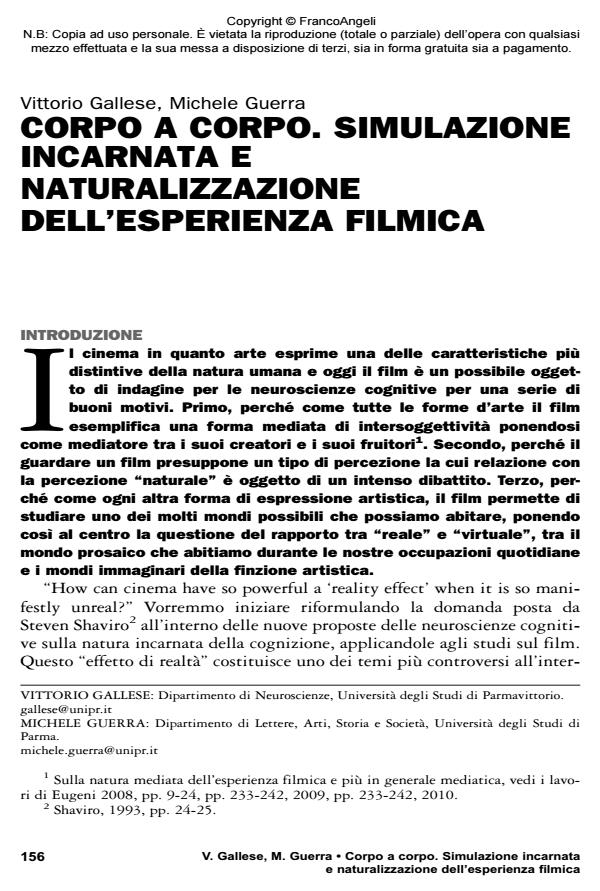Corpo a corpo. Simulazione incarnata e naturalizzazione dell’esperienza filmica
Titolo Rivista PSICOBIETTIVO
Autori/Curatori Vittorio Gallese, Michele Guerra
Anno di pubblicazione 2014 Fascicolo 2014/1
Lingua Italiano Numero pagine 22 P. 156-177 Dimensione file 1173 KB
DOI 10.3280/PSOB2014-001012
Il DOI è il codice a barre della proprietà intellettuale: per saperne di più
clicca qui
Qui sotto puoi vedere in anteprima la prima pagina di questo articolo.
Se questo articolo ti interessa, lo puoi acquistare (e scaricare in formato pdf) seguendo le facili indicazioni per acquistare il download credit. Acquista Download Credits per scaricare questo Articolo in formato PDF

FrancoAngeli è membro della Publishers International Linking Association, Inc (PILA)associazione indipendente e non profit per facilitare (attraverso i servizi tecnologici implementati da CrossRef.org) l’accesso degli studiosi ai contenuti digitali nelle pubblicazioni professionali e scientifiche
Recenti scoperte neuroscientifiche, tra cui quella dei neuroni specchio, hanno fortemente influenzato il dibattito sulla cognizione spaziale, l’azione, le emozioni e l’empatia, tutti aspetti recentemente riconsiderati dagli studi sul film. Questo articolo si concentra sul ruolo che la teoria della simulazione incarnata - elaborata a partire dalla scoperta dei neuroni specchio - svolge nell’esperienza filmica. È stato proposto che la simulazione incarnata costituisca un meccanismo funzionale di base del cervello umano. Grazie ad un formato rappresentazionale corporeo condiviso, mappiamo le azioni altrui sulle nostre rappresentazioni motorie. Ci chiediamo quanto questo meccanismo sia rilevante per l’esperienza filmica, riconsiderando sia le teorie classiche che quelle più recenti sul film che in qualche modo hanno anticipato la simulazione incarnata. Vaglieremo la nostra ipotesi attraverso l’analisi stilistica di due sequenze tratte da Notorius di Alfred Hitchcock e Il grido di Michelangelo Antonioni.
Parole chiave:Antonioni; Hitchcock; neuroni specchio; simulazione incarnata; stile cinematografico
- The Palgrave Handbook of the Philosophy of Film and Motion Pictures Daniel Jerónimo Tobón, pp.865 (ISBN:978-3-030-19600-4)
Vittorio Gallese, Michele Guerra, Corpo a corpo. Simulazione incarnata e naturalizzazione dell’esperienza filmica in "PSICOBIETTIVO" 1/2014, pp 156-177, DOI: 10.3280/PSOB2014-001012